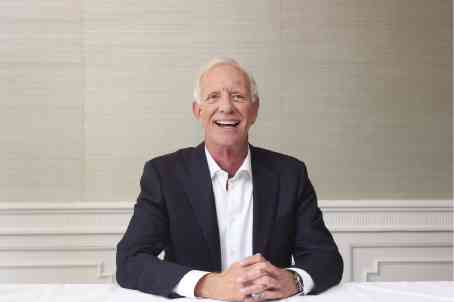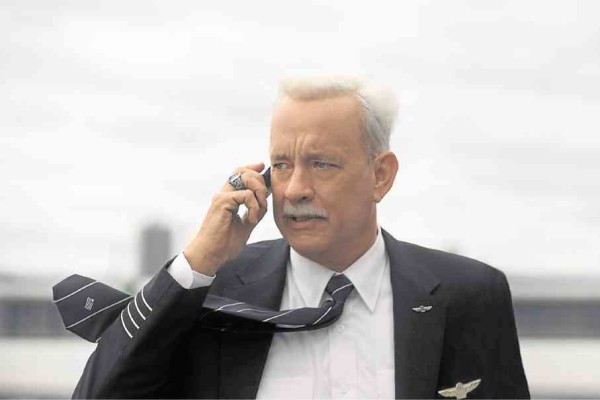Hero pilot looks back at ‘miracle’ plane landing on Hudson River
LOS ANGELES—Seven years after steering a plane with 155 passengers to land on the Hudson River in an emergency, Chesley “Sully” Sullenberger is the subject of a movie with no less than Tom Hanks playing him and Clint Eastwood directing.
“Sully” dramatizes the “miracle on Hudson” that made him a national hero.
The Wall Street Journal described Sully’s decisive move as “one of the rarest and most technically challenging feats in commercial aviation: landing on water without fatalities.”
In the minutes after takeoff, the pilot managed to maneuver past the skyscrapers of Manhattan and into the crowded Hudson River, even though the engines were disabled after apparently hitting a flock of geese.”
Sully checked the passenger cabin twice to make sure all passengers had evacuated, got the plane’s maintenance logbook and walked out, the last to evacuate the aircraft.
Article continues after this advertisementIn his interviews, Sully makes it a point to credit his copilot (Jeff Skiles, played by Aaron Eckhart), crew, passengers and rescue workers for helping make the US Airways Flight 1549 emergency water landing the remarkable miracle story that it is.
Article continues after this advertisementIn a meeting room at The London Hotel West Hollywood, Sully is every inch “Captain Cool,” as then New York City Mayor Michael Bloomberg dubbed the pilot in command of the jet that had just taken off from New York’s La Guardia airport en route to Charlotte, North Carolina.
The silver-haired Texas native has a genial, dignified air about him, reinforced by his soothing voice. “And don’t forget taller,” quipped the man, dapper in a navy suit, who learned to fly at age 16.
“Sully is how the world knows me,” he replied with a smile when asked how he preferred to be called. “I always make it a point to mention that everyone in my profession, who makes it to the left seat in command, has earned the title of Captain, but no ceremony here. Thank you for asking.”
In our talk, Sully admitted that he was not exactly cool after the water landing on Jan. 15, 2009. He said he suffered from post-traumatic stress disorder. After his recovery, Sully returned to flying planes at US Airways until he retired in March 2010.
“Sully” is based on his book, “Highest Duty: My Search for What Really Matters,” which he cowrote with Jeffrey Zaslow, who died in 2012.
In the best seller, Sully revealed that his father, who was battling depression, shot himself. “One of the reasons I’ve placed such a high value on life is that my father took his,” Sully wrote.
Excerpts from our chat:
What went through your mind in the first few seconds of that incident?
One of the first three conscious thoughts I had in those first few seconds after the damage to the engines that lost thrust was, first, this can’t be happening—a very typical thought, rooted in disbelief, which I have read that other pilots in similar situations have had.
That was followed immediately by, this doesn’t happen to me. In other words, for 42 years and 20,000 miles in the air, I had never been so challenged on a flight that I doubted the outcome.
Then, the third thought was a realization that unlike all those other flights for 42 years, this one would probably not end on a runway with the aircraft undamaged. I was OK with that, as long as I could solve the problem.
How rare are bird strikes?
Bird strikes are infrequent. The most common bird strikes involve one or two small birds that often don’t even damage the airplane.
What happened to us was a rare event. We encountered a large flock of large birds—the species is Canada Geese, several dozens of them—and they struck the airplane all over, with at least two going in each engine and damaging them irreparably.
Have you always been calm in critical situations?
While my natural temperament is to be stoic and a man of few words, those are all things that people can and do learn, especially professional pilots, because those are the kinds of skills that work in an emergency in an airplane that we have to have.
How did you feel inside, though?
It was very stressful. In the first seconds, I knew exactly how much of a crisis this event was.
What was harder, trying to calm yourself or the passengers?
Both calming myself, then helping to calm others were very important. But they had to happen in different orders.
First, we had to force calm on ourselves so that we could effectively do the other things, including help calm others.
What was it like when you returned to flying for the first time since the incident?
It wasn’t hard. I had to wait for my post-traumatic stress disorder symptoms to fade. I had to get my sleep cycle back, so I could consistently sleep through the night without interruption.
I had to get my blood pressure and pulse back down to normal levels. It took almost three months to do that.
Can you give some tips on how to survive a plane crash?
It’s a matter of personal responsibility for everyone … for every passenger … to know where the emergency exits and the lights are, to know there’s a seat cushion for flotation or a life vest under your seat or somewhere else.
It’s knowing how the safety equipment works on the airplane and where it is. And leave your baggage behind.
What’s it like to have Tom Hanks portray you on the big screen?
It was almost an out-of-body experience to see someone else become like me and in some cases, speak words I spoke almost verbatim, either to my wife (Lorraine), Jeff Skiles or someone else.
Tom did a masterful job. He really transformed himself in every way—in speech, cadence of the walk, mannerisms and the attitude that he has about things.
Can you talk about suddenly talking to Clint Eastwood and Tom Hanks and planning to make a film about you?
This whole experience has been surreal, and it’s been a wild ride. That flight changed our lives, instantly and forever.
It couldn’t really be in better hands. It’s a dream team. I always liked Clint and Tom’s work. Clint read the script and within a week’s time, I got the word that the project was going to go forward.
Then, within 10 days after that, he actually came to the house and had lunch and spent three hours with us, talking about the film and why he liked the script.
Tom came to the house a few months later and spent probably half a day talking about all the pitfalls and the responsibilities of playing a real person who is still living. We went through the script and made some notes.
What motivated you to write the book? How cathartic was that experience?
I felt that as a matter of historical record, it was important to write about the story.
So it was cathartic, and it did help to talk, think and write about it.
Have you tried the Sully Cocktail?
I had a Sully Cocktail and you saw in the film what it is—a Grey Goose and a splash of water.
Are you still a full-time pilot?
I am now a recreational pilot. I fly for fun.
E-mail [email protected]. Follow him at https://twitter.com/nepalesruben

